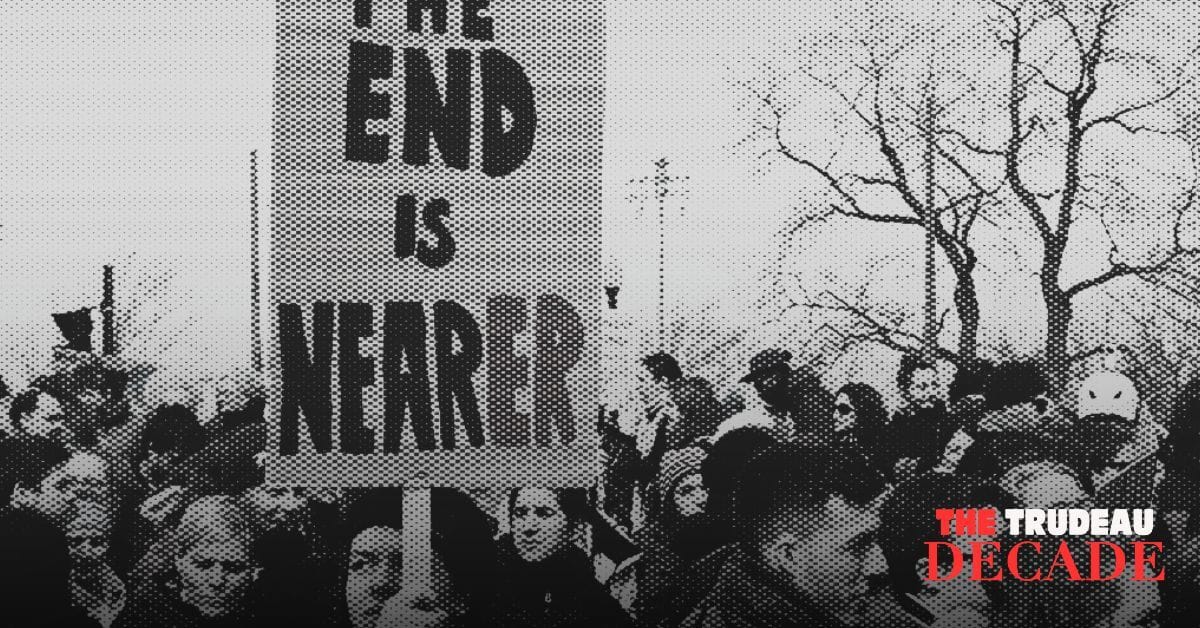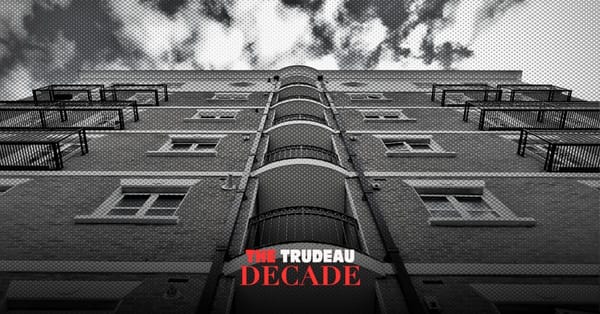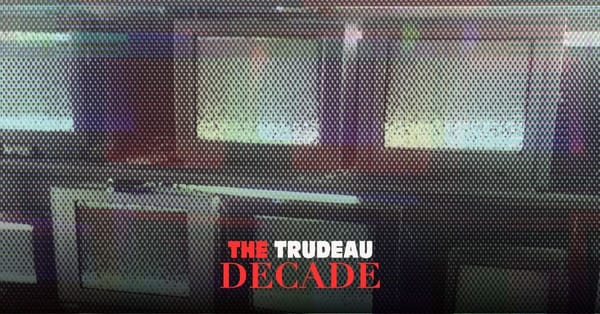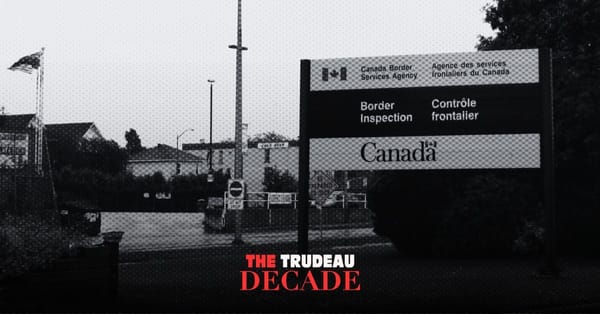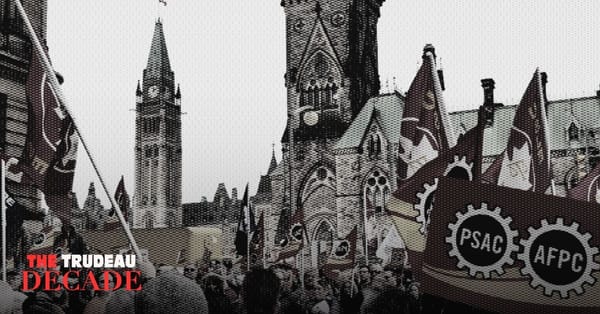
Where We Are
In November 2015, just weeks after his Liberal government was sworn in, Prime Minister Justin Trudeau made one of his first international appearances at COP21 in Paris.
“Canada is back, my friends,” Trudeau declared from the conference stage. “We’re here to help. To build an agreement that will do our children and our grandchildren proud.”
In Paris, each country was expected to develop its own plan to keep global temperature increases below 1.5 degrees Celsius, an ambition that climate researcher Zeke Hausfather recently called “deader than a doornail.”
Trudeau reaffirmed the commitment that former Conservative prime minister Stephen Harper had made in the dying months of his premiership to reduce CO2 emissions to 30 per cent below 2005 levels by 2030.
In 2019, the Liberals adopted net zero by 2050 as its end goal and announced tax cuts for clean energy companies. In 2021, Trudeau toughened the 2030 target with a pledge to reduce emissions from 40 to 45 per cent below 2005 levels to help reach the net zero goal.
The following year, the government unveiled its 2030 Emissions Reduction Plan, which laid out a roadmap to cap emissions from the oil and gas industry, phase out the sale of new combustion engine vehicles, and eliminate burning fossil fuels for electricity generation.
These plans hinged on the government subsidizing the widespread adoption of carbon capture utilization and storage technology (CCUS), which doesn’t have a track record of working as advertised.
Laurie Adkin, a professor emerita of political science at the University of Alberta, told The Maple that she regards Trudeau’s performance on climate as a “crushing disappointment.”
“The idea is just to keep the economy running as it normally does, without there being any substantial cost to capitalists,” said Adkin. “I think it’s pretty clear that this is unsustainable, both socially and environmentally.”
In his November 2024 report, Environment Commissioner Jerry DeMarco revealed that Canada has only reduced CO2 emissions by seven per cent since 2005, meaning the government has “only six years left to do essentially 20 or 30 years worth of reductions.”
“Canada remains the worst performer among all member countries of the G7 since 1990 and 2005,” DeMarco wrote, echoing a criticism he made in his 2023 report.
Canada’s reduction of emissions from 2005 levels still represents a 16 per cent increase from 1990, making it the only G7 country not to have reduced emissions below 1990 levels.
According to International Energy Agency figures, Canada’s 523.33 megatonnes of CO2 emissions in 2022 ranked 11th in the world and 4th in the G7, behind the United States, Japan and Germany.
Hadrian Mertins-Kirkwood, a senior researcher at the Canadian Centre for Policy Alternatives whose work focuses on Canada’s shift towards net zero, told The Maple that Trudeau’s climate record “is a tricky thing to assess.”
“On the one hand, what Trudeau has done is historic. He’s taken climate more seriously than any previous federal government, more seriously than most, but not all, provincial governments, and not just rhetorically, but has actually put in place real policy,” Mertins-Kirkwood said.
A seven per cent decline in emissions from 2005 levels is no small feat, considering Canada’s population grew by a quarter and its gross domestic product grew by 83 per cent in the same period.
Yet these achievements are “still inadequate in the context of the problem that they’re trying to address,” Mertins-Kirkwood noted.
How We Got Here
In February 2015, when he was merely the leader of the third-largest party in the House of Commons, Trudeau pitched what would be the centrepiece of his government’s approach to combatting climate change at the Calgary Petroleum Club.
“Many in this room believe that a price on carbon is good for the environment, for the economy, and for Alberta’s oil and gas sector,” Trudeau told the audience of oil and gas executives, noting that right-leaning provincial governments in Alberta, British Columbia and Quebec were already at that time leading the way in putting a price on pollution.
Trudeau depicted a national carbon pricing regime as a means of purchasing “social license” to secure approval for projects like the ultimately ill-fated Keystone XL pipeline.
In October 2018, after three years of negotiating a federal climate framework with provincial leaders, Trudeau’s government passed the Greenhouse Gas Pollution Pricing Act, which established a national carbon pricing floor for provinces that didn’t already have their own federally approved carbon taxation regime.
The price on pollution began at $20 a tonne in 2019, before rising $10 per year until reaching $50 a tonne in 2022.
Starting last year, the government began raising the carbon tax by $15 per year, with the goal of it reaching $170 per year by 2030.
Carbon pricing was originally conceived as a market-friendly solution to addressing climate change as opposed to direct regulation, with Reform Party founder Preston Manning praising it as recently as 2014.
But since the carbon tax became the centrepiece of the Liberals’ climate policy, opposition to it was taken up as a rallying cry for conservative politicians across the country. Federal Conservative Party Leader Pierre Poilievre has made promising to “axe the tax” a central campaign talking point.
Adkin described the Liberals’ preference for a carbon tax as “almost suicidal” politically, with scant evidence that it plays a significant role in reducing emissions.
“What’s needed is major state intervention, democratic planning and huge investment in the new sectors that need to be built out — and a phase out of fossil fuels,” she said.
According to Keith Brooks of Environmental Defence Canada, some of the government’s most effective emissions reduction measures have come through direct regulation, rather than tinkering with market incentives.
In 2016, as the federal government wrangled over its carbon taxation plans with the provinces, then-environment minister Catherine McKenna announced plans to phase out the burning of coal for electricity generation by 2030, rather than the 2061 target of the previous Conservative government.
“If you look at emissions reductions in Canada, the bulk of them have been achieved because of the coal phase out, not all of which was led by the feds,” Brooks told The Maple.
Ontario was able to reduce its emissions by 17 per cent as it phased out coal-generated electricity between 2007 and 2014.
Another important piece of direct regulation that Brooks identified is the Electric Vehicle Availability Standard announced in December 2023. That policy set targets for 20 per cent of all new sold vehicles to be electric by 2026, 60 per cent by 2030 and 100 per cent by 2035.
As of 2022, transportation was the sector responsible for the second-largest share of emissions in Canada at 22 per cent, surpassed only by the oil and gas industry at 31 per cent.
Buying A Pipeline
Mere months before introducing the carbon tax legislation, Trudeau purchased the Trans Mountain Pipeline expansion project (TMX) from Kinder Morgan for $4.5 billion after the company threatened to back away from the project.
By the time the expansion opened in May 2024, nearly tripling the amount of tar sands bitumen shipped to the B.C. Lower Mainland for export, its price tag had increased to $34 billion.
When he first ran for the Liberals in the 2019 election, Environment and Climate Change Minister Steven Guilbeault, a former environmental activist, said he disagreed with the government’s decision to proceed with TMX.
Mertins-Kirkwood said the TMX purchase is “so emblematic” of the Trudeau government’s contradictory imperatives on climate.
Trudeau’s support for ongoing fossil fuel expansion, Mertins-Kirkwood added, reflects a “knot that the government’s trying to tie itself into,” in which it attempts to cut CO2 emissions for domestic consumption while expanding fossil fuel production, displacing the emissions generated from increased production onto other countries.
While Canada’s domestic emissions have decreased in recent years, Canada’s National Observer recently reported that emissions from the oil, gas and coal that Canada exports, which aren’t covered by Canada’s emissions reduction commitments, have increased by 58 per cent since 2012.
“We are actually fuelling climate change on a global scale through our exports,” said Adkin. “The first thing we should actually be cutting back in terms of a phase out is exports, but that’s not on the agenda.”
Where We’re Going
In the final year of its third term, the Liberal government has a series of significant climate policies in the works aimed at getting Canada to net zero by 2050.
Chief among them is the world’s first emissions cap for the oil and gas sector — which was introduced in draft form in November 2024, three years after it was promised — and Clean Electricity Regulations mandating a net-zero electric grid across Canada by 2035.
Both policies are vociferously opposed by the federal Conservatives, as well as Alberta Premier Danielle Smith, whose province produces 84 per cent of Canada’s oil, and has an electricity grid that runs mostly on natural gas.
While Smith’s government launched a $7-million nationwide advertising campaign calling the emissions cap a “production cap,” the federal government insists oil and gas production will still increase by 16 per cent once the cap goes into effect between 2030 and 2032, in part due to the presumed widespread adoption of CCUS technology, which the federal government is subsidizing via $5.7 billion worth of tax credits.
Guilbeault said the cap, which requires oil and gas producers to reduce emissions to 35 per cent below 2019 levels, was designed specifically to enable production growth.
“If they don’t have to cut back production, the cap isn’t low enough,” Adkin said, adding that the policy of allowing companies who have exceeded the cap to purchase carbon offsets further reduces its impact. “The program is not serious.”
With the clean electricity mandate, Guilbeault said that natural gas electricity will still be permitted after 2035 if plants are equipped with CCUS technology.
For Brooks, these carve-outs for CCUS are a major weakness in both policies, warranting “a big asterisk” around them.
A November 2023 report from Oil Change International found that existing publicly funded CCUS projects in the United States and Australia have a track record of operating at anywhere between 10 per cent to 67 per cent of promised capacity.
One of the few Liberal climate policies that Poilievre hasn’t committed to reversing is support for CCUS.
While environmentalists, including Guilbeault’s former colleagues, criticize the Liberals for taking their time on the emissions cap in the midst of a climate emergency, the timing could be politically useful for the Liberals, who are badly trailing in repeated polls leading up to the next election, which is expected to occur by October 2025.
When he announced the emissions cap framework, Guilbeault explicitly raised the prospect of a Poilievre government bringing down not only that specific measure, but the entire edifice of the Liberals’ climate policy.
“It’s not just the cap that is at risk,” said Guilbeault in December 2023. “The Conservative Party of Canada (and) Pierre Poilievre don’t seem to be willing or able or capable to understand that pollution kills people in Canada.”
But Adkin predicts that this political calculation, with a Canadian media environment dominated by right-wing actors, will allow the Liberals to be “steamrolled” by Poilievre.
“I’m left wondering why they have let themselves be so besieged by the far right and its fossil capital allegiance,” said Adkin. “They haven’t been smart about this.”
Acknowledging that the government’s climate record is “patchy,” Brooks said it’s worth noting that “for the first time ever, we have a plan to reduce emissions.”
“We could sustain this momentum and build on it, and I think there’s a real concern that a change of government would undo a lot of that progress and set us back,” he said.
Jeremy Appel is an independent Edmonton-based journalist and the author of Kenneyism: Jason Kenney’s Pursuit of Power.
More From The Trudeau Decade Series






